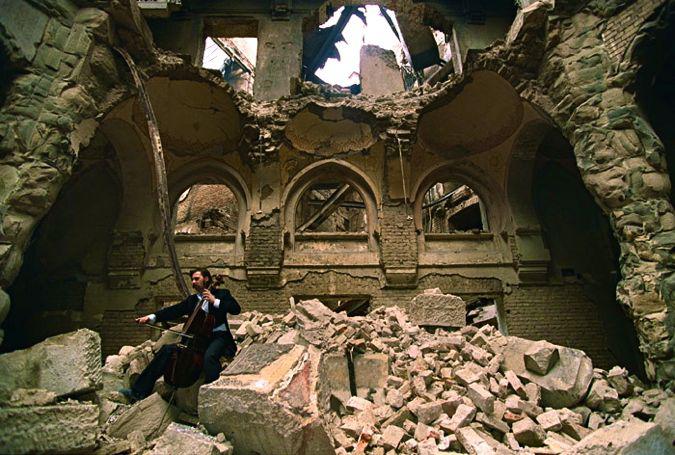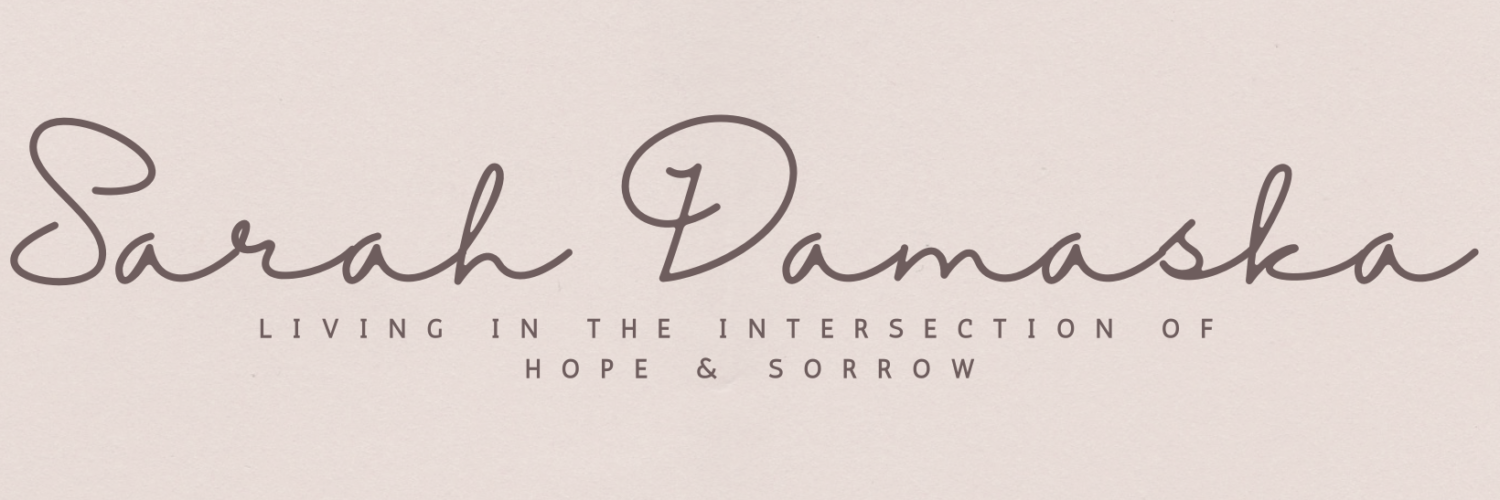
Our daughter, Annie, died suddenly when she was six month old. What doctors had assured us was just an acute case of the flu turned out to be a massive brain tumor that took her life just three days after her diagnosis. The morning after we came home from the hospital without her, Peter and I sat in bed, shocked to be making funeral plans.
I don’t remember how we pulled it together, but I do remember the beauty. It was in those who grieved with us, those who came from far away, in those who missed school and work to be there. It was in the gorgeous blue sky. It was in my son, who sat alone in the front row and my daughter who wiggled for our attention all day. Our hearts were utterly broken, but somehow it was still beautiful.
During the Bosnian War, a stray mortar shell killed twenty-two innocent people waiting in line for bread. Food supplies were dwindling and while many were afraid to be out in the open, hunger had driven them to the streets.
The square in Sarajevo was destroyed, people were terrified and it was only getting worse. The year was 1992. For forty-four months, the city was under siege, the longest of any capital city in the history of modern warfare. Even a trip out to gather water could be deadly.
In the middle of the rubble and bloodshed, pain and terror, a man named Vedran Smailović did the only thing he could think of. As the bombing rained down, he risked his life by playing his cello in the city square. Family and friends were killed, buildings around him were being destroyed, but still he played. For twenty-two days he played Adagio in G Minor, allowing the music to touch the souls of the survivors as only music can do. “Smailović became a symbol of how beauty stands in resistance to the madness of war,” James Bryan Smith wrote.
The people gathered around him, grieving and starving. In the end, over 100,00 people were killed and 2.2 million were forced to leave. The atrocities of those years are too many to name. But even in the midst of such grief, there were people like Samilović to remind people of the beauty that can flow out of pain.
I believe there’s something about the story that we long for. We desire beauty in the midst of tragedy, to see the good in something so horrific. We are made for redemption.
It’s what Nicholas Wolterstorff wrote in his book Lament for a Son: “And sometimes, when the cry is intense, there emerges a radiance which elsewhere seldom appears: a glow of courage, of love, of insight, of selflessness, of faith. In that radiance we see best what humanity was meant to be… In the valley of suffering, despair and bitterness are brewed. But there also character is made. The valley of suffering is the vale of soul-making.”
Beauty manifests itself in countless ways, however some of the rarest forms of beauty emerge in our pain and suffering. Beauty does not cease in those pivotal moments when everything crumbles around us. In fact, it’s in those moments we are forced to calculate the cost of beauty. In our fight for hope, in the heartache of suffering, beauty becomes radiant as we look to Christ.
The Bible goes to great lengths to communicate the beauty of brokenness: Rahab risked her life for it. Naomi’s bitterness is transformed by it. Isaac’s life is saved. David’s sin with Bathsheba is redeemed. Queen Esther’s bravery saves her people. Job refuses to quit believing, even as he laments. Lazarus returns to life.
In the book of Genesis, Joseph struggled and grieved the loss of everything he knew. Yet years later when he was reunited with his family, as his brothers wept in remorse, he tells them, “You intended to harm me, but God intended it for good to accomplish what is now being done, the saving of many lives.” (Genesis 50:20) His response could be tucked into any of those Bible stories.
Also? It can be inserted into our stories. Joseph’s response is an example to us, a promise we can hold on to when everything crumbles around us.
No matter how atrocious, there is always hope. Vedran Smailović didn’t singlehandedly end the war, but he brought a glow of hope to the people around him. Our daughter’s life ended tragically, but it holds significant meaning. In all of our heartache, Jesus is here, bringing beauty out of our ashes. There is nothing beyond His reach, nothing beyond His redemption. “And in that radiance, we see best what humanity was supposed to be.” Nicholas was right.
Isaiah wrote that “people in walking in darkness have seen a great light; on those living in the land of deep darkness a light has dawned… For to us a child is born, to us a Son is given” (9:2,6). It’s the greatest promise of all time. A Savior who draws us out of the darkness, who redeems us and meets us here, in the intersection of our hope and sorrow.
May you walk bravely, my friend, refusing to give up hope. May you seek beauty each day in the valley of your suffering. And may Christ, who upholds you and sustains you, reveal His goodness and hope to you today.
*I’ve done my best to honor the story of Smailović, but if you do your own research you’ll find there are several discrepancies to the story.


Thank you for sharing these profound words with us, Sarah!
You are so welcome.